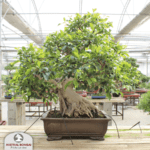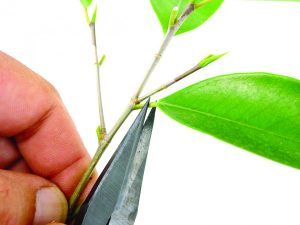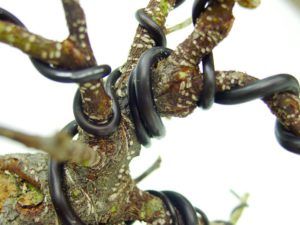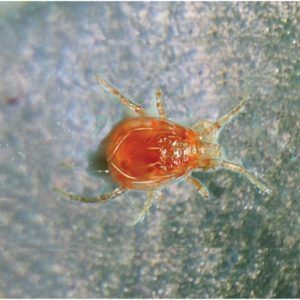Ficus retusa bonsai. Seven things to learn about its care
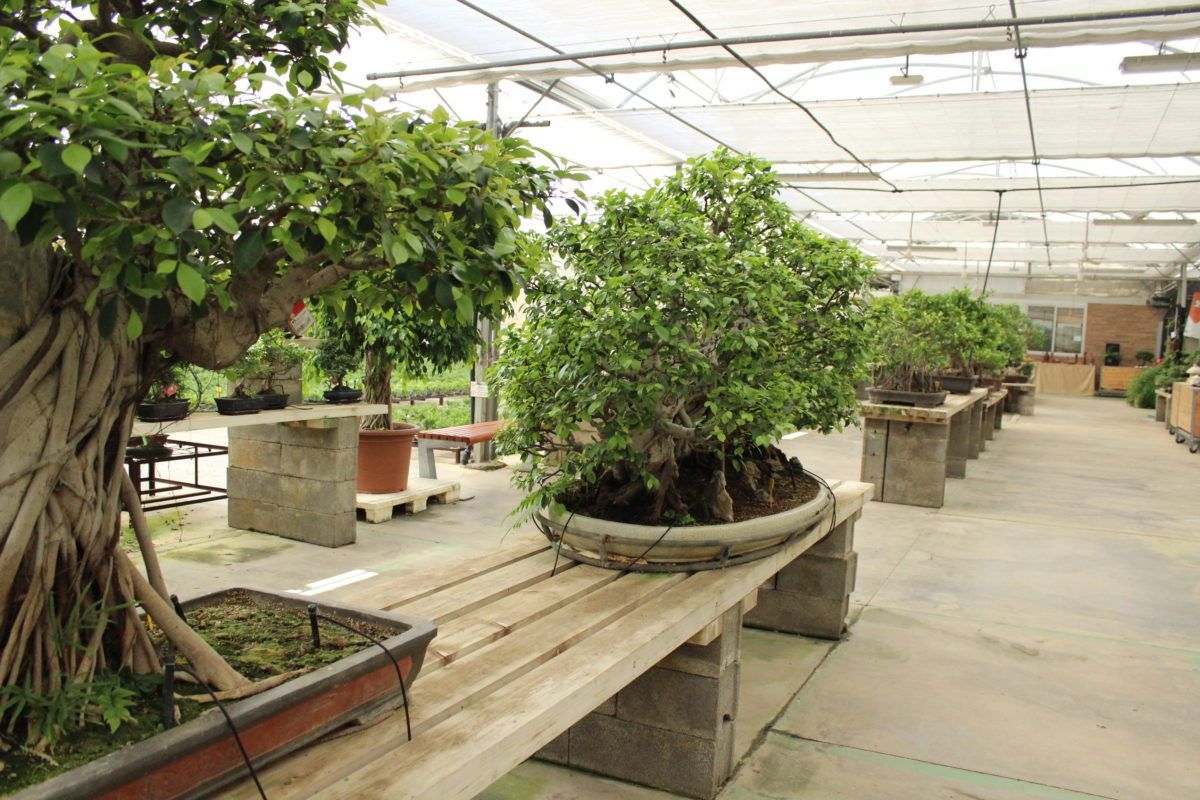
Ficus retusa bonsai is one of the strongest trees and suitable for bonsai enthusiasts. It is highly appreciated for its great resistance and adaptability. It is a tree with bright and robust leaves, with very striking trunks. In addition, the emission of aerial roots gives it a special character. Through these aerial roots, in nature, Ficus spread their branches and occupy a huge area of land.
In this blog we show you the 7 things you should know if you want to have a Ficus retusa bonsai in your collection.
Location
The Ficus retusa is a tree of tropical origin and needs more or less constant temperatures to live well. In any case, in areas with mild climates such as the Mediterranean, we can place it perfectly outside. In the case of locating it inside the house, it will be essential to provide a space with sufficient light and ventilation. We will place it as close as possible to a well-lit window so that it can properly photosynthesize.
In the event that we decide to locate our bonsai outdoors, the growth will be faster and more vigorous. This will make the crown of the tree look fuller and bushy. We must bear in mind that in this case the water needs will be increased.
Irrigation of Ficus retusa
The frequency of irrigation will depend on several factors, so we could not establish a fixed guideline. Irrigation will be directly related to the location of the bonsai, the humidity and temperature. Ficus retusa is a species with great resistance to drought, but they have to be watered when the substrate is partially dry. If we touch the soil, and it is not wet, we have to water. It is not very demanding on the quality of the water, they can be watered without problems with tap water, but if we soak the leaves with very calcareous water they will get stained. It is preferable that we let the soil dry out a bit rather than keeping it always damp, since excessive humidity could cause the roots to rot.
Pruning
Ficus respond very well to pruning as long as they are healthy and well cared for. It helps to do a light fertilisation before. The best time to prune Ficus is towards the end of spring. We can prune until mid-summer, so they have time to recover and grow back.
In pruning wounds, Ficus produce a white milky substance called latex. For many people, it can burn the skin, so it is advisable to wear gloves when doing this task.
Defoliation
Defoliating is a technique that is used to achieve a more abundant branching and with smaller leaves. It basically consists of removing the leaves from the tree, thus creating an artificial winter and forcing the bonsai to make a second sprout. This technique is carried out on the mature leaf and after the first sprouting of spring, at the beginning of summer.
We must bear in mind that this technique will only be applied to bonsai that are healthy and vigorous. In the case of being weak, it will be better to wait for him to get stronger so as not to worsen his health.
Wiring
Wiring is a technique that allows us to model the branches without having to go through pruning. The thin branches of these bonsai have great flexibility. That makes modelling easier, but thick branches are much stiffer and difficult to bend without breaking. The optimal time for wiring is after pruning or defoliating, when we can best see its ramification structure.
If you want to know more about the wiring technique, you check the blog “How to wire and shape a bonsai“.
Fertilising
Ficus retusa is a fast-growing species, so it is necessary to fertilise regularly, especially in spring, summer and autumn, so that no nutrient is lacking. From spring to autumn we should fertilise every 2 weeks, and every month in winter. Check the recommendations of the fertiliser manufacturer to decide which amount and way to do it.
Check this blog post for more info. Ficus retusa bonsai. Secrets of watering and fertilisation.
Most common pests of Ficus retusa
Ficus are very resistant species, but occasionally they can be affected by some pests and diseases. We explain the most frequent:
- Red Spider: they are tiny mites. These mites bite the leaves, in which innumerable small yellow dots appear. The best treatment is a good acaricide.
- Thrips: To see them well we need a magnifying glass, they are usually 2 mm in this species. The affected leaves fold, and thus serve as a refuge for the larvae. To eliminate them, we have to remove the affected leaves and deal with a systemic insecticide.
- Mealybugs: Cottony mealybugs give off an important amount of molasses that fall on the leaves of the Ficus retusa that end up blackening when fermented. It is very easy to see the cottony mealybugs for their large white cotton-like filaments.
We hope you liked this complete guide to get to know Ficus retusa bonsai tree species more deeply.
About the Author
Mistral Bonsai
In Mistral Bonsai we are a communication team, technicians and masters committed from the first day to disseminating the wonderful art of bonsai. A world that offers many things to share. We believe that a bonsai is a tree with a soul, unique and unrepeatable. Another of our most essential pillars is, how could it be otherwise, our close commitment to the preservation of the environment and nature.
Categories
Bonsai cultivation and care (60)
Bonsai gift (2)
Bonsai pests and diseases (7)
Bonsai repotting (3)
Bonsai species (1)
bonsai substrates (2)
Bonsai summer (1)
bonsai tools (1)
Bonsai work (13)
Ceramic pots (3)
Chinese culture (2)
Chinese culture (1)
Coniferous bonsai (2)
Conifers (1)

